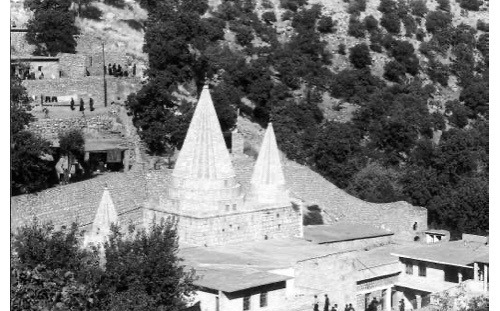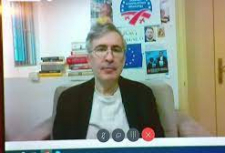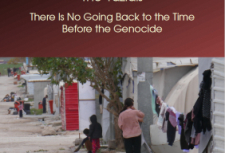The festival of Sheik Adi in Lalish, the holy valley of the yezidis

Eszter Spat
Part 1
Lalish, the holy valley of the Yezidis in the Kurdish mountains a few hours drive from Mosul, Iraq, is a place where time seems to stand still. If the feel (and look) of the Middle Ages has survived anywhere in the Middle East, it is here, in the valley made fertile by two sacred springs. There are reasons to believe that this idyllic place has been favored by the gods (or rather by their worshippers); in all probability it was the site of a Nestorian monastery for centuries, and it is the resting place of the greatest patron saint of the Yezidis, Sheikh Adi, a twelfth-century . The Yezidis are an enigmatic and little known who have incorporated a wide range of religious motifs into their unique belief system, from Zoroastrianism through Gnosticism. They believe that once every year the Seven Angels, emanations of the Godhead, congregate above Lalish and decide the fate of the world for the coming year. This occurs during the week-long Autumn Assembly, also known as the Festival of Sheikh Adi. Today it is a spiritually fulfilling pilgrimage rather than a requirement, and a meeting place for the whole community—a matter of immense importance during the years of Kurdish Autonomy (1991–2003). At that time the Yezidi community was cut in two by the Iraqi variant of the Iron Curtain, which could only be crossed on this occasion provided that the Iraqi government and the Arab border guards were in a lenient mood toward.
Admittedly, observing such a ceremony is not stricto sensu part of my research as a doctoranda, given the fact that my PhD thesis deals with the incorporation of Gnostic motifs in Yezidi mythology, an interesting but rather quaint and elusive topic. Bona fide researchers of Gnosticism may sigh over their inability to observe an authentic Gnostic ritual sometime in the first centuries of our era, to help them reconstruct the atmosphere of Gnostic spirituality. However, I thought that my experience would not be irrelevant. One cannot understand the ethos of a religion without getting to know that religion, the people who practice it, and the way they practice it. And what better way of gathering knowledge, than to breath the heady air of mysteries performed and join in the profane pleasures offered by such a festival?
Tags: #yazidisinfo #yezidis #aboutyazidi
The festival of Sheik Adi in Lalish, the holy valley of the yezidis

Eszter Spat
Part 1
Lalish, the holy valley of the Yezidis in the Kurdish mountains a few hours drive from Mosul, Iraq, is a place where time seems to stand still. If the feel (and look) of the Middle Ages has survived anywhere in the Middle East, it is here, in the valley made fertile by two sacred springs. There are reasons to believe that this idyllic place has been favored by the gods (or rather by their worshippers); in all probability it was the site of a Nestorian monastery for centuries, and it is the resting place of the greatest patron saint of the Yezidis, Sheikh Adi, a twelfth-century . The Yezidis are an enigmatic and little known who have incorporated a wide range of religious motifs into their unique belief system, from Zoroastrianism through Gnosticism. They believe that once every year the Seven Angels, emanations of the Godhead, congregate above Lalish and decide the fate of the world for the coming year. This occurs during the week-long Autumn Assembly, also known as the Festival of Sheikh Adi. Today it is a spiritually fulfilling pilgrimage rather than a requirement, and a meeting place for the whole community—a matter of immense importance during the years of Kurdish Autonomy (1991–2003). At that time the Yezidi community was cut in two by the Iraqi variant of the Iron Curtain, which could only be crossed on this occasion provided that the Iraqi government and the Arab border guards were in a lenient mood toward.
Admittedly, observing such a ceremony is not stricto sensu part of my research as a doctoranda, given the fact that my PhD thesis deals with the incorporation of Gnostic motifs in Yezidi mythology, an interesting but rather quaint and elusive topic. Bona fide researchers of Gnosticism may sigh over their inability to observe an authentic Gnostic ritual sometime in the first centuries of our era, to help them reconstruct the atmosphere of Gnostic spirituality. However, I thought that my experience would not be irrelevant. One cannot understand the ethos of a religion without getting to know that religion, the people who practice it, and the way they practice it. And what better way of gathering knowledge, than to breath the heady air of mysteries performed and join in the profane pleasures offered by such a festival?
Tags: #yazidisinfo #yezidis #aboutyazidi


























